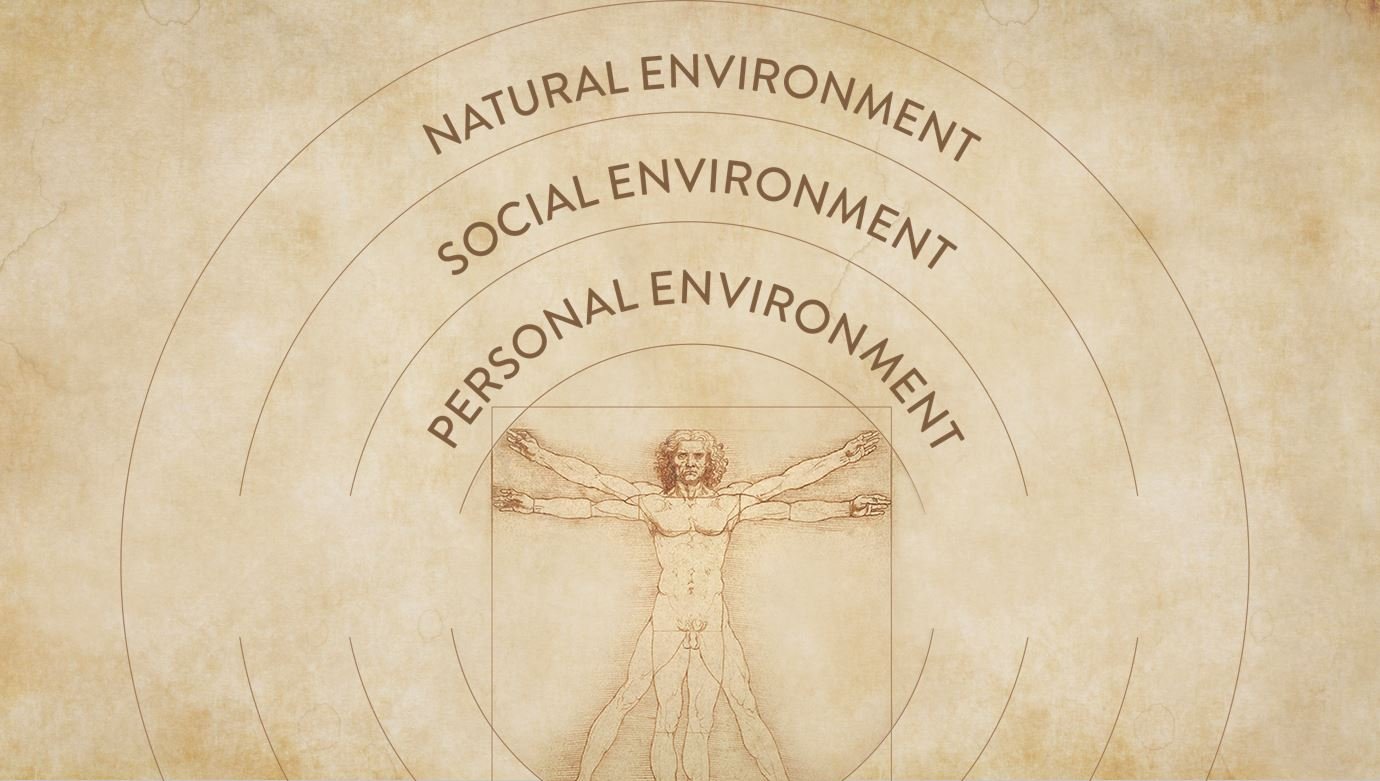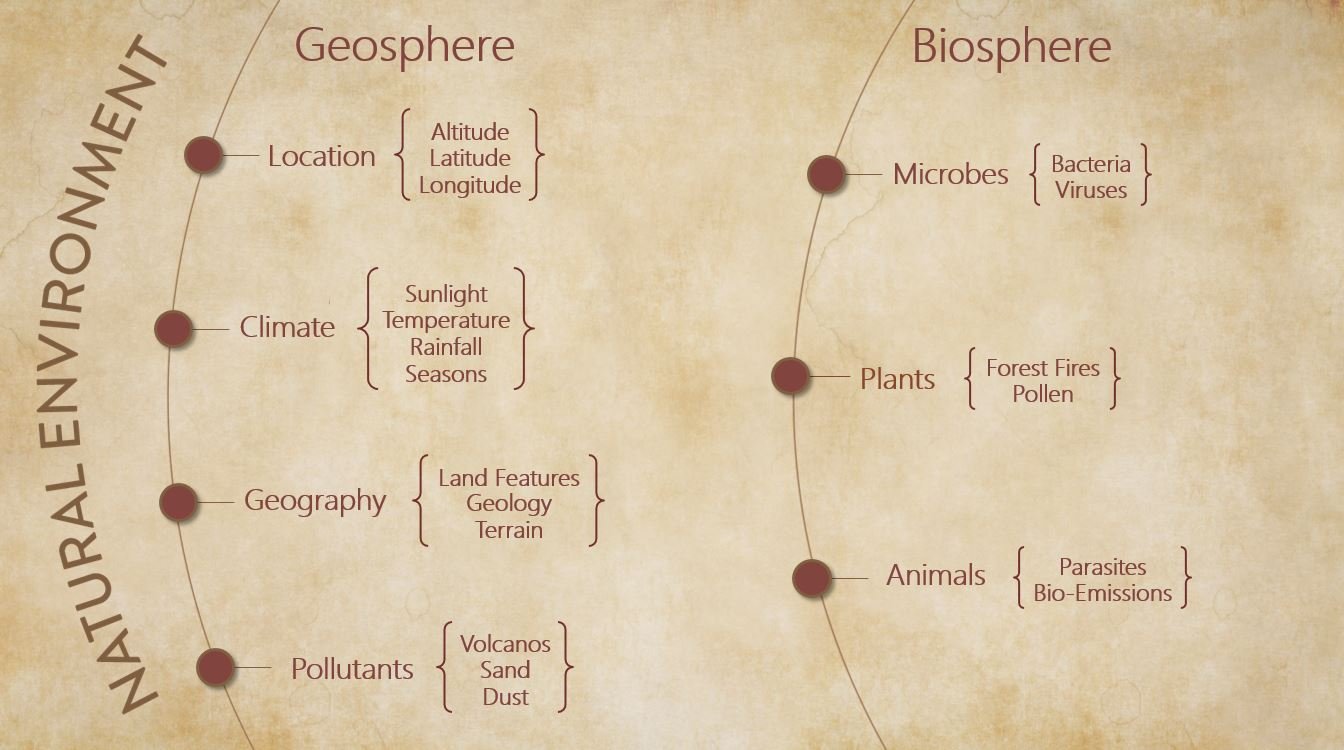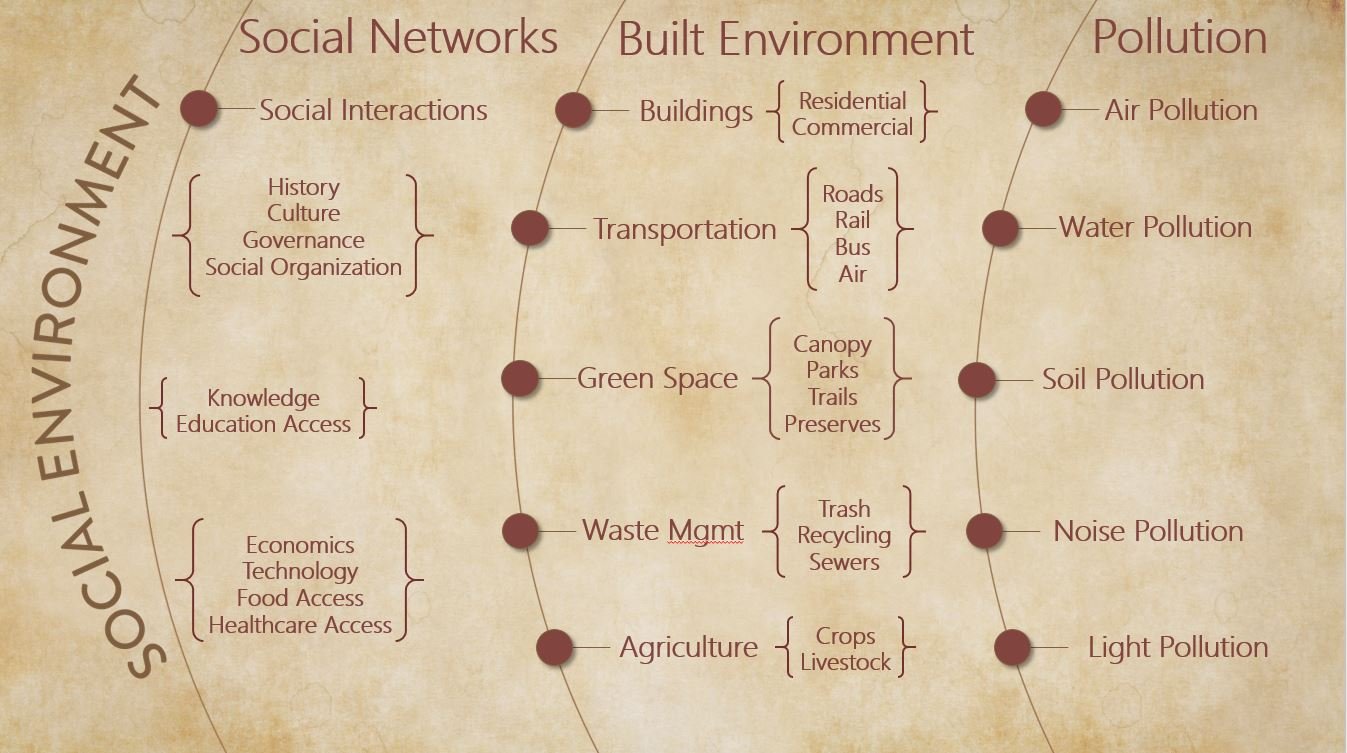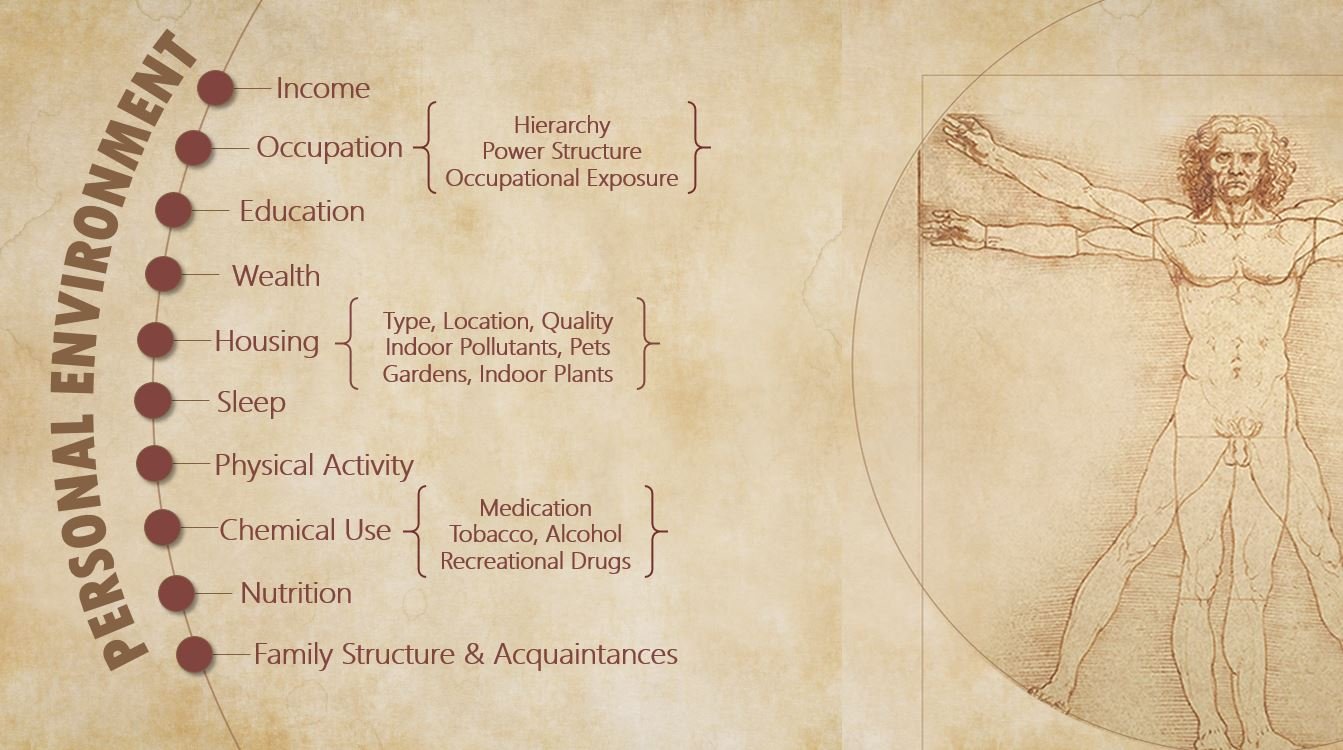
The Human Envirome
Is the complete set of natural, social, and personal conditions that shape the health of each individual. Unique to every person, the envirome regulates and influences development, lifespan, disease risk, and physical and mental health.

A conducive environment is essential for human health and well-being
Conducive environments are essential for optimal growth, health, and aging. Unpolluted, green environments, with high biodiversity, promote physical and mental health, and minimize the risk of sickness and disability. Supportive social networks that encourage healthy lifestyle choices – such as physical activity, good nutrition, and social equity – nurture good health, diminish mental stress, and enhance individual resilience.

Unconducive Environments and Disease Risk.
Living in unconducive environments or in a state of environmental dyssynchrony can lead to chronic disease. Chronic disease can also arise from exposure to unhealthy environments or a mismatch between genes and environment. Together, such environmental factors account for nearly 60-70% of heart disease, 80% of diabetes, and 97% of all cancers. By understanding the relationships between individuals and their environment, we may be able to uncover new sources of chronic disease, develop preventative measures, and discover new therapies.

Domains of the Envirome.
The human envirome is made up of three nested domains: natural, social, and personal. The natural environment includes geographic and ecological features like latitude, topography, and region. The built environment, government, and institutions create our social environments. Conditions that are unique to each person – our house, our habits, and our place in society – make up the personal environment.

Enviromics:
Not Just the Exposome, the Social Determinants of Health, or Lifestyle Choices.
The foundation of the envirome in omics creates a new framework for understanding the totality of our environment.
Current models of the environment such as the exposome include all chemical and microbial exposures. Models related to the social determinants of health list social, economic, and cultural conditions that affect population health, whereas individual-level models evaluate lifestyle choices. Few models incorporate all three, and none explain the role of nature, ecology, or geography.
The envirome is a holistic view of the human environment – it accounts for the influence of nature, exposome, social organization, as well as personal conditions unique to an individual. By including the principles of both population health and personalized medicine, investigators at the Envirome Institute seek to develop a complete view of the environment and its relationships to human health and disease.

Our health and well-being depend upon our envirome.
Health and the Natural Environment
Like all other living things, we are entrained to the cycles of night and day, and dyssynchrony with this primordial cycle increases the risk of heart disease and cancer. Like plants, we need sunlight for the synthesis of vitamin D, and our physiology and physiological adaptations vary with altitude and latitudes. Plants, animals, and microbes in our environment are sources of food, but also disease and infection.
Health and the Social Environment
Our social interactions, our history, and our culture, make up our social environment. The social environment deeply transforms the influence of the natural environment. By interacting with nature, we develop agriculture, invent technology, and fashion food networks. Our interactions with each other create civic and social organizations housed in built structures such as cities, roads, and parks. By generating noise, pollutants, and toxins, these environments threaten human health, and by their varied structures, they influence healthcare access, social cohesion, health disparities, and socioeconomic status.
Health and the Personal Environment
From the society they live in, individuals create their own personal environments. These microenvironments are formed by chance, circumstance, and choice. They are characterized by the conditions closest to us, such as our home, our family, and our income, as well as our choices that relate not only to nutrition and physical activity, but also to the use of tobacco, alcohol, and recreational drugs. Although personal environments exist within the larger, shared, and more public social environments, they differ among individuals living in the same society and culture.
The Christina Lee Brown Envirome Institute was founded upon the idea that the environment can be medicine. Through rigorous investigation of the interconnections between human health and the environment, we can change the trajectory, treatment, and maintenance of chronic disease through environmental modifications.
The Latest Envirome News
